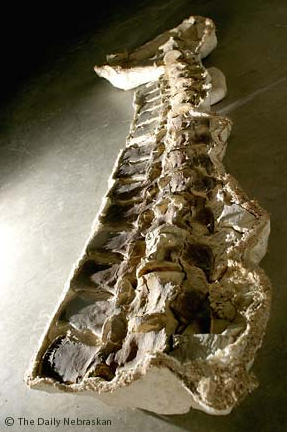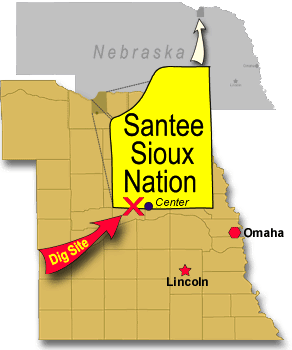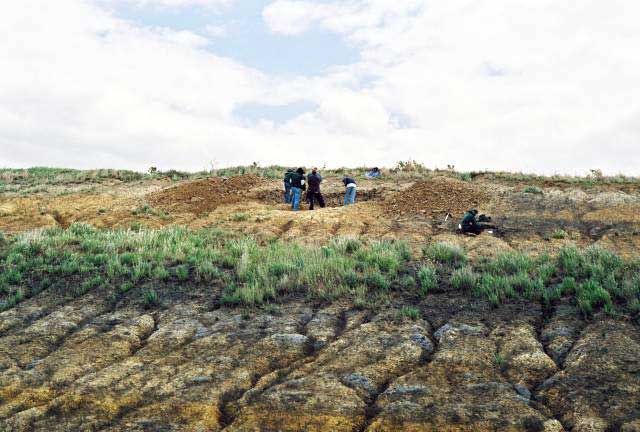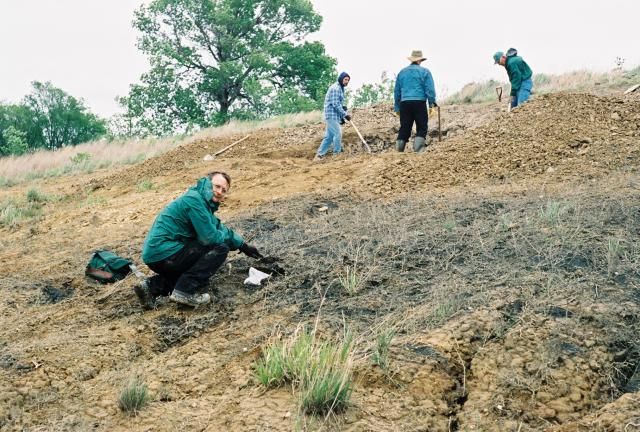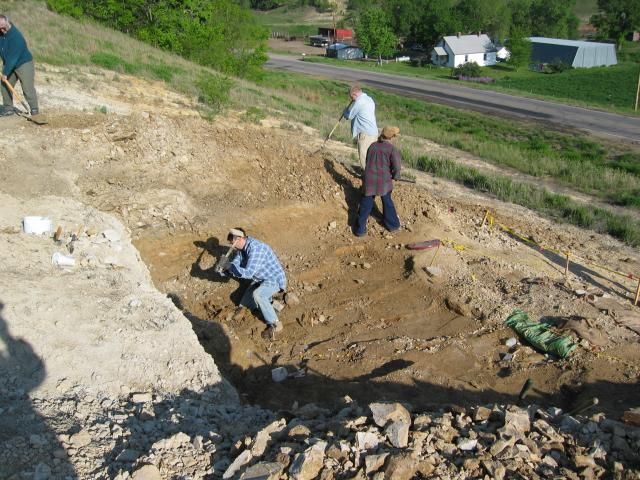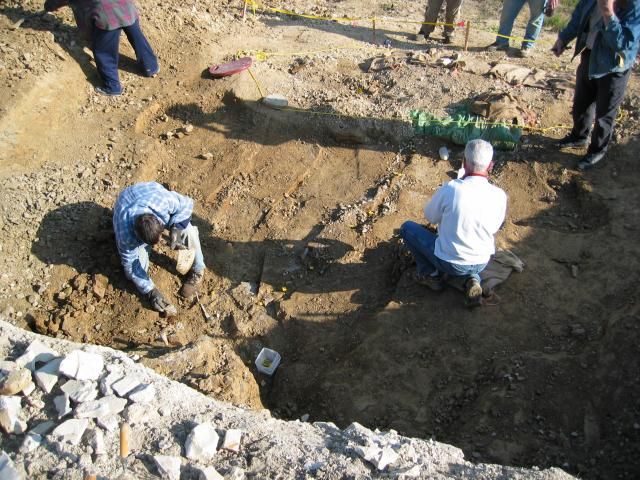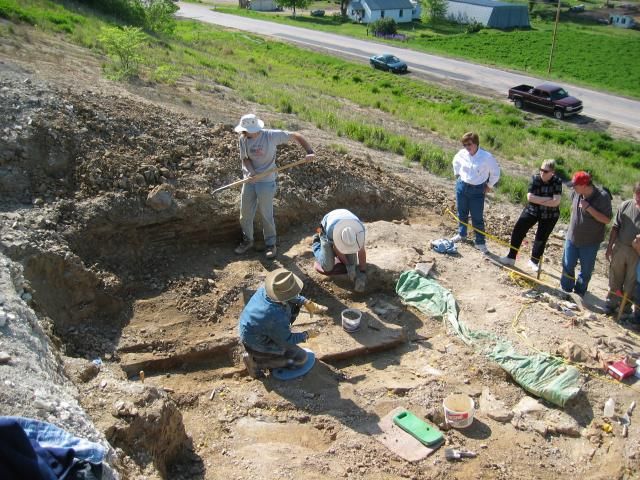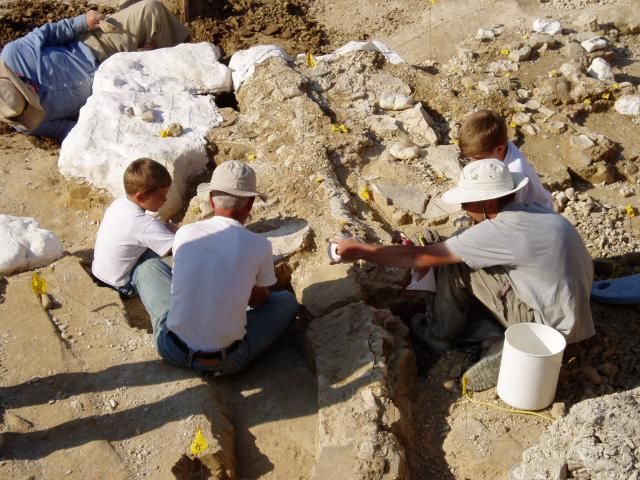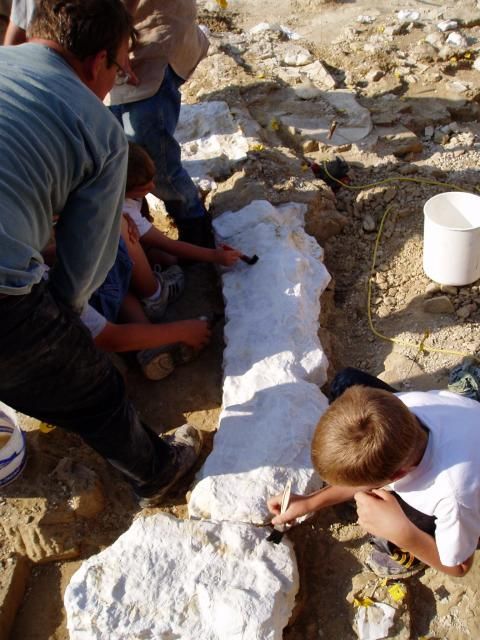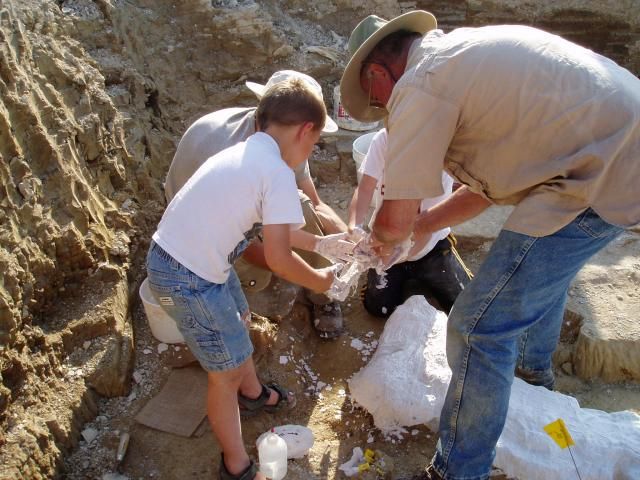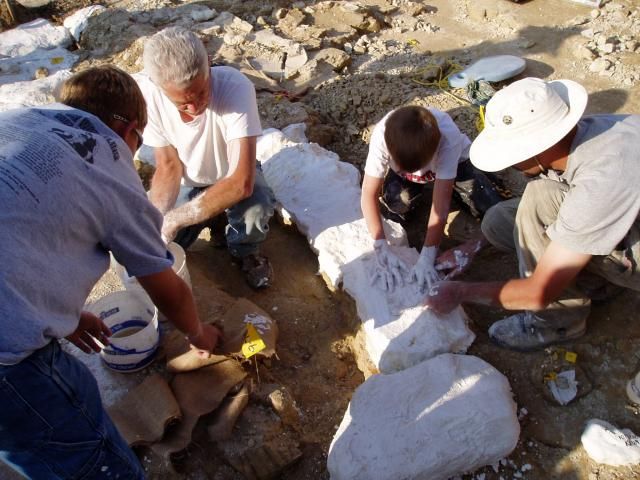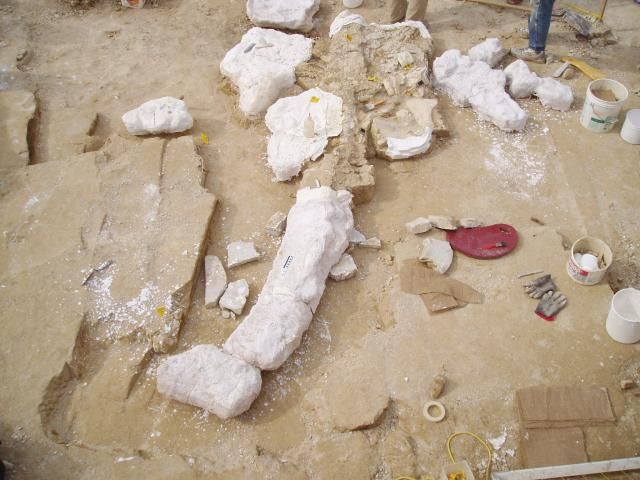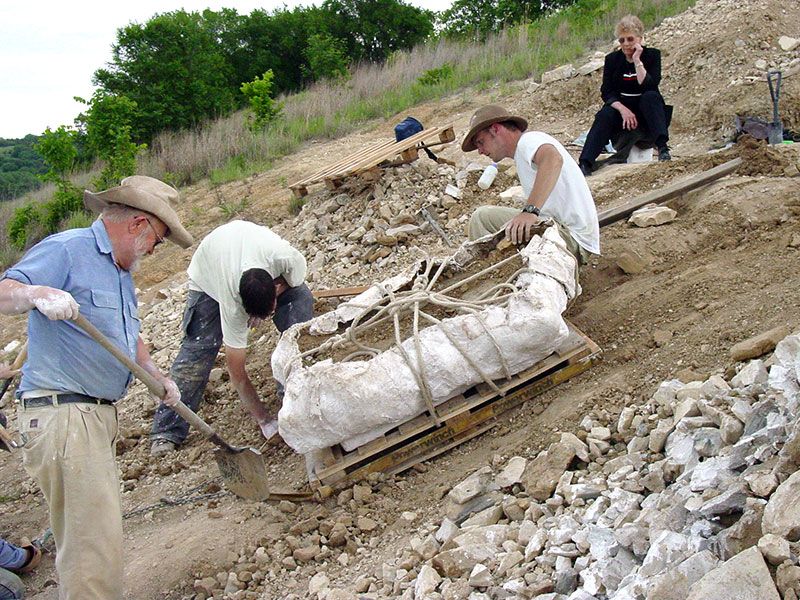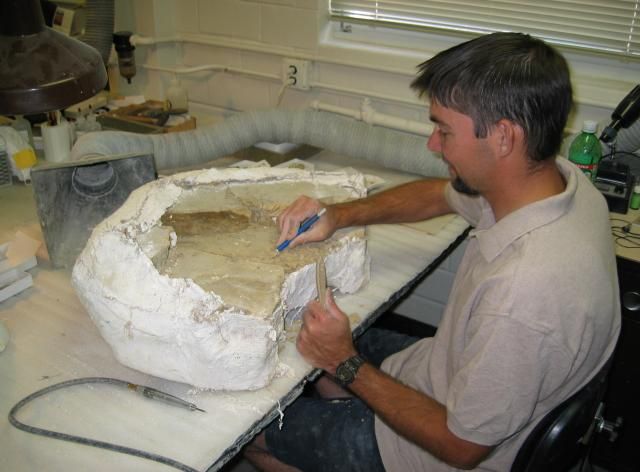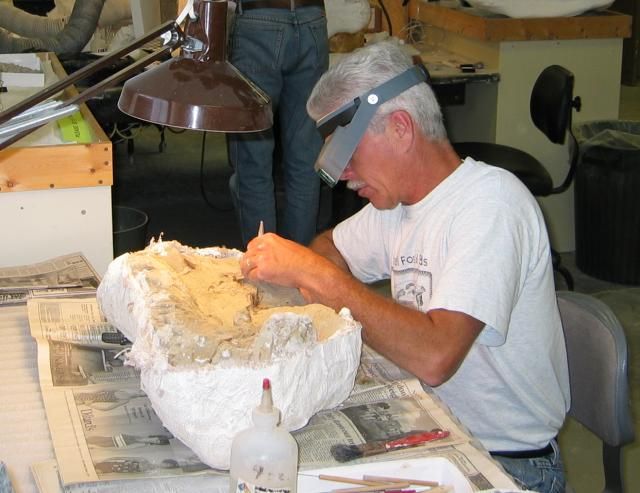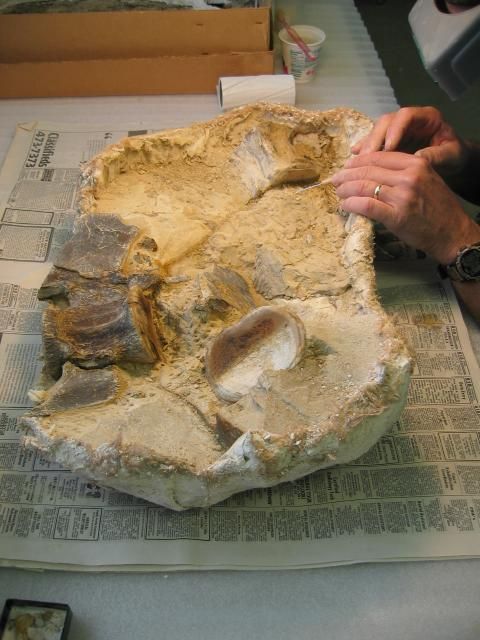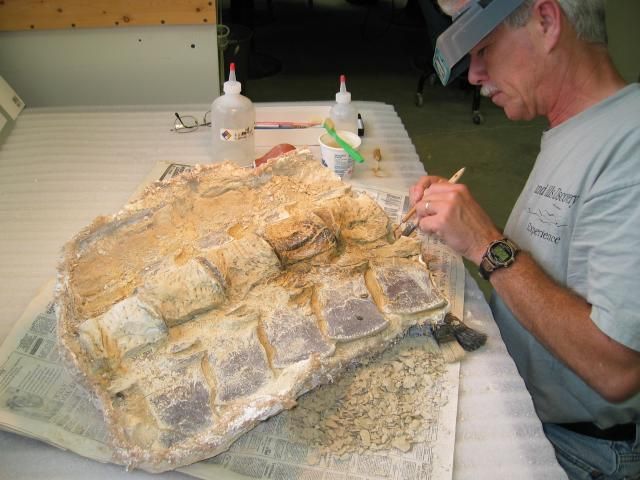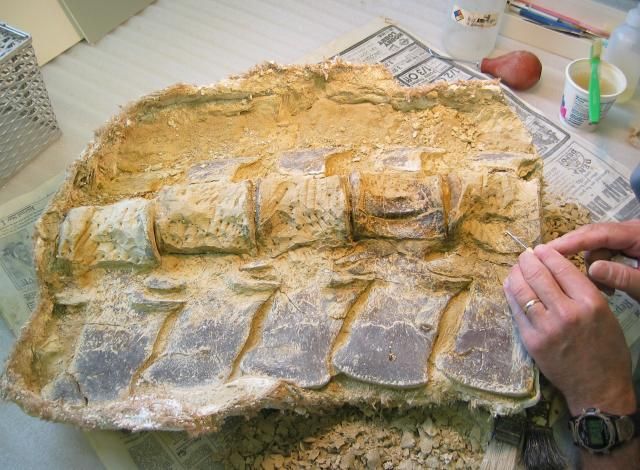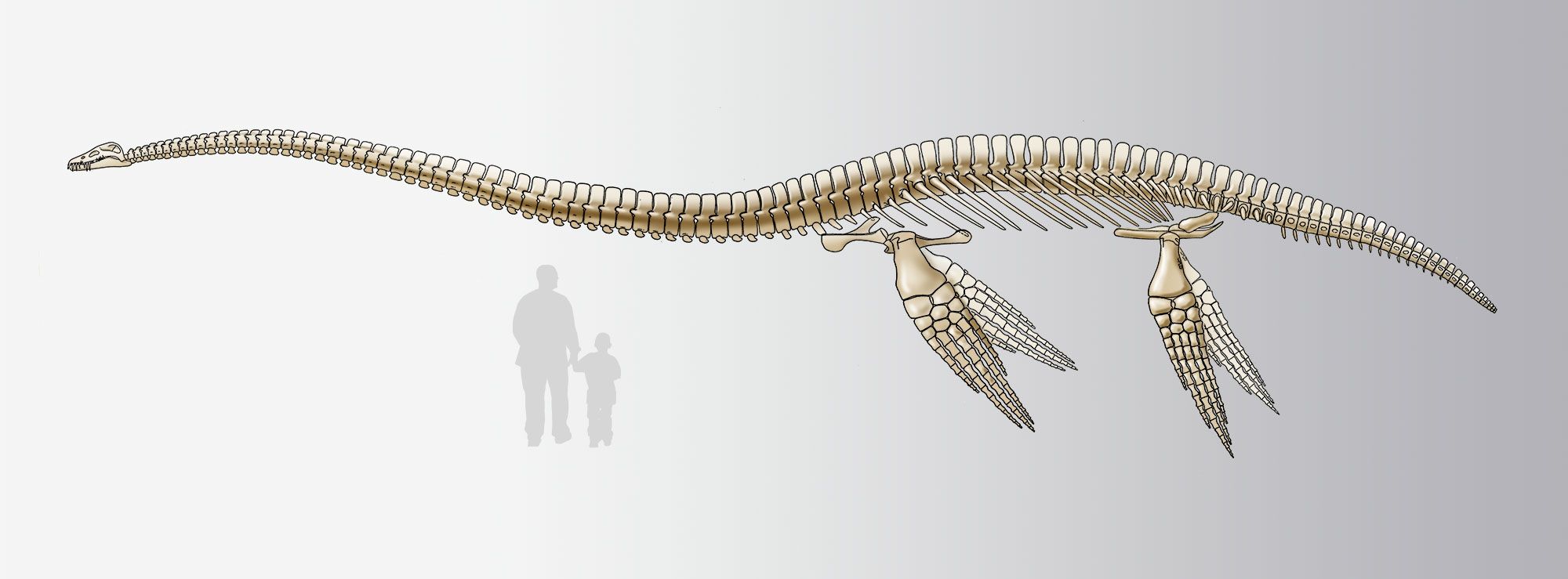
Highway Paleontology Program
A Mesozoic Plesiosaur
< Vertebrate Paleontology Home
The Highway Paleontology Program is a partnership between the University of Nebraska State Museum and Nebraska Department of Transportation.
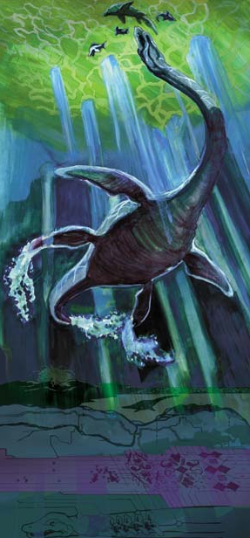
Painting © Scott Eastman, The Daily Nebraskan
A Joint Discovery Announcement
On February 10, 2004, the University of Nebraska-Lincoln student newspaper, The Daily Nebraskan, published student art work and photography for a story called Echoes of the Past, written by the paper's editor, Van A. Jensen. The story concerned the Mesozoic plesiosaur fossil excavated in May 2003 from a site within the present boundaries of the Santee Sioux Nation in northeast Nebraska. The fossil had been determined to be about 70 million years old, that is, near the end of the Cretaceous Period of the Mesozoic Era. The fossil was found on state highway right-of-way within the boundaries of the Santee Sioux Nation near the town of Center. The excavation was conducted by University of Nebraska State Museum paleontologists in the Highway Paleontology Program. The Santee Sioux Nation, The Daily Nebraskan, Nebraska Department of Roads, and University of Nebraska State Museum were delighted to share the news of this wonderful fossil discovery.
Article by Museum Paleontologists
December is not the ideal time to prospect for fossils in Nebraska. Regardless, Mike Baldwin, an amateur paleontologist and science educator from Brownsville Texas, braved the elements in search of shark teeth. As a kid growing up in the area, Mike was interested in geology and paleontology and frequently explored gravel pits, creek bottoms, roadcuts, and his family’s land for rocks and fossils. It was a relatively unsuccessful day looking for fossils between patches of snow and ice but his persistence paid off when he saw two large bones weathering out of the hill.






